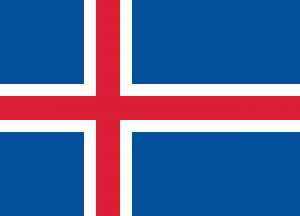Language/Icelandic/Grammar/How-to-Use-Have
Hi Icelandic learners! 😊
In this lesson, we will learn how to use the verb "have" in Icelandic. Mastering this verb is essential in order to express possession and talk about actions that have been completed. We will provide you cultural information and interesting facts along the way. 🤓
So, let's dive into it!
Once you've mastered this lesson, take a look at these related pages: Prepostitions & Articles.
Basic Usage[edit | edit source]
In English, the verb "have" is used in a variety of ways, such as expressing possession ("I have a dog"), forming compound tenses ("I have eaten") or expressing obligation ("I have to go"). Similarly, the Icelandic verb "hafa" has a number of uses, and it is important to understand how it works in different contexts.
The most basic use of "hafa" is to express possession, just like in English. For example:
| Icelandic | Pronunciation | English | |||
|---|---|---|---|---|---|
| Ég hef hund | [jɛk hɛv hʏnt] | I have a dog | Hann hefur bók | [haun hɛvʏr pouk] | He has a book |
Another common use of "hafa" is to form compound tenses, just like in English. For example:
| Icelandic | Pronunciation | English | |||
|---|---|---|---|---|---|
| Ég hef borðað | [jɛɣ hɛv pɔrðauð] | I have eaten | Við höfum kemst á leið | [vɪð hœfʏm kʰɛms̠t aː leɪθ] | We have arrived |
Notice how "hafa" is followed by the past participle of the main verb.
Possession[edit | edit source]
As we mentioned earlier, "hafa" can be used to express possession. However, in Icelandic there is a different way to express ownership which is more commonly used. Instead of saying "ég hef hund", most native speakers would say "hundurinn minn" (my dog). This alternative way is simply a noun phrase that is formed by combining a definite noun (hundurinn) and an attributive adjective (minn).
It is worth noting that Iceland is a country that has a long tradition of keeping animals such as horses, sheep, and dogs. The Icelandic Sheepdog, or "Íslenskur fjárhundur", is a breed of dog which has been common in Iceland for hundreds of years. It is known for its friendliness and playful nature, and it was even used for herding sheep and protecting farms.
Compound Tenses[edit | edit source]
"Hafa" is also used to form compound tenses in Icelandic. In English, compound tenses are formed by combining the auxiliary verb "have" with the past participle of the main verb, such as "I have eaten". Similarly, in Icelandic, "hafa" is followed by the past participle of the main verb, which is formed by adding "-ð" to the infinitive form of the verb.
Here are some more examples:
| Icelandic | Pronunciation | English | |||
|---|---|---|---|---|---|
| Ég hef komið | [jɛk hɛv kʰɔmɪð] | I have come | Þú hefur lært mikið | [θu hɛvʏr laurt mɪcɪð] | You have learned a lot |
Using "Hafa" with Other Verbs[edit | edit source]
"Hafa" can also be used with other verbs to indicate an action that has been completed. This usage is similar to the English construction "have + past participle". For example:
| Icelandic | Pronunciation | English | |||
|---|---|---|---|---|---|
| Ég hef lesið bókina | [jɛk hɛv lɛsɪð poukɪna] | I have read the book | Þeir höfðu séð myndirnar | [θɛɪr hœfðʏ saɪːð mʏnɪrnar] | They had seen the pictures |
This construction is particularly useful when talking about experiences or achievements, such as "I have traveled to Iceland" or "I have graduated from university".
Dialogue[edit | edit source]
- Person 1: Hefur þú verið í Íslandi? ([Have you been to Iceland?])
- Person 2: Já, ég hef verið þarna tvískipta. ([Yes, I have been there twice.])
- Person 1: Ert þú búin/n að horfa á þessa mynd? ([Have you watched this movie?])
- Person 2: Já, ég hef þegar séð hana. Hún er mjög góð. ([Yes, I have already seen it. It's very good.])
Conclusion[edit | edit source]
Congratulations! You have learned how to use "hafa" in different contexts. Remember that you can always use the Find native speakers and ask them any questions about Icelandic Polyglot Club.
If you want to learn more about Icelandic Grammar, we encourage you to check other lessons available on Polyglot Club's wiki. Keep it up, you are doing great! 😊
➡ If you have any questions, please ask them in the comments section below.
➡ Feel free to edit this wiki page if you think it can be improved. 😎
Having concluded this lesson, consider checking out these related pages: Gender & Questions.
Videos[edit | edit source]
Icelandic Grammar: How to use SEM - YouTube[edit | edit source]
Other Lessons[edit | edit source]
- Adverbs
- Definite Article
- Negation
- Prepostitions
- Plurals
- Icelandic Articles
- How to Use Be
- Verbs
- Articles
Sources[edit | edit source]
- Icelandic grammar - Wikipedia
- Icelandic: Grammar, Text and Glossary ... - Amazon.com
- Genitive | Icelandic Grammar Reference

